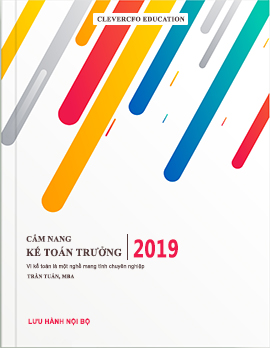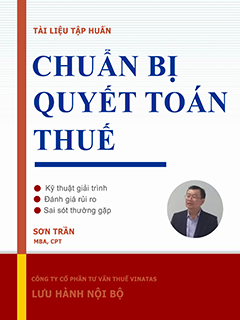Accounting Dictionary – 73 – TAR
SWIFT CODE, within the context of international payment transactions, is a code issued by the Society for Worldwide Interbank Financial Telecommunication (SWIFT) that enables banks worldwide to be identified without the need to specify an address or bank number. SWIFT codes are used mainly for automatic payment transactions.
SYNDICATE is a group of investment bankers or banks that acts jointly, on a temporary basis, to, in the case of investment bankers, sell securities or to underwrite a new issue of bonds (syndicated capital), or, for the bank syndicate to loan money in a bank credit (syndicated credit).
SYNERGY is the working together of two or more things to produce an effect greater than the sum of their individual effects. For example, in the context of mergers, cost synergy is the savings in operating costs expected after two companies, who compliment each other's strengths, join.
SYNTHETIC LEASE is a transaction that appears, from an accounting standpoint, as a lease, but as a loan from a tax standpoint; resulting in an off-balance sheet account of the financing and the tax benefits that accompany the financed asset.
T-ACCOUNT is the basis for journal entry in accounting. T-accounts have three basic elements. A title, a left side (debit side) and a right side (credit side). To make an entry in a t-account, put the currency (dollar, pound, etc.) amount on the appropriate side (debit or credit). There are five basic types of accounts: assets, liabilities, equity, revenue and expenses. Assets, liabilities and equity are the balance sheet accounts.
TAINTED ACCOUNTS RECEIVABLE is receivables that are considered to be legally suspect due to acts of fraud, misuse, or abuse.
TAKEOVER refers to one company (the acquirer) purchasing another (the target). Such events resemble mergers, but without the formation of a new company.
T&E is an acronym for Travel & Entertainment.
T&M is Time and Materials.
T&R, among others, can mean: Technical & Research or Termination & Recoupment.
TANGIBLE normally refers to assets that can be held or seen and that are capable of being appraised at an actual or approximate value (e.g. inventory, land & buildings, etc.).
TANGIBLE BOOK VALUE is different than book value in that it deducts from asset value intangible assets, which are assets that are not hard (e.g., goodwill, patents, capitalized start-up expenses and deferred financing costs).
TANGO SHEETS is a not often used slang term refering to a document that compares forecasted financial data to actual financial performance for the purposes of illegally adjusting the reported financial data to more closely match the prior forecasted performance.
TARE WEIGHT is the weight of packing container and packaging material without the weight of the goods contained therein.
TARGET COSTING is a disciplined process for determining and realizing a total cost at which a proposed product with specified functionality must be produced to generate the desired profitability at its anticipated selling price in the future.
TARIFF, usually, a country's tax on imports. May sometimes refer to the rate of tax; and, is used interchangeably with the term “duty”.
TARIFF, AD VAL OREM is a tariff determined as a percentage of the value of the goods.
SWIFT CODE, within the context of international payment transactions, is a code issued by the Society for Worldwide Interbank Financial Telecommunication (SWIFT) that enables banks worldwide to be identified without the need to specify an address or bank number. SWIFT codes are used mainly for automatic payment transactions.
SYNDICATE is a group of investment bankers or banks that acts jointly, on a temporary basis, to, in the case of investment bankers, sell securities or to underwrite a new issue of bonds (syndicated capital), or, for the bank syndicate to loan money in a bank credit (syndicated credit).
SYNERGY is the working together of two or more things to produce an effect greater than the sum of their individual effects. For example, in the context of mergers, cost synergy is the savings in operating costs expected after two companies, who compliment each other's strengths, join.
SYNTHETIC LEASE is a transaction that appears, from an accounting standpoint, as a lease, but as a loan from a tax standpoint; resulting in an off-balance sheet account of the financing and the tax benefits that accompany the financed asset.
T-ACCOUNT is the basis for journal entry in accounting. T-accounts have three basic elements. A title, a left side (debit side) and a right side (credit side). To make an entry in a t-account, put the currency (dollar, pound, etc.) amount on the appropriate side (debit or credit). There are five basic types of accounts: assets, liabilities, equity, revenue and expenses. Assets, liabilities and equity are the balance sheet accounts.
TAINTED ACCOUNTS RECEIVABLE is receivables that are considered to be legally suspect due to acts of fraud, misuse, or abuse.
TAKEOVER refers to one company (the acquirer) purchasing another (the target). Such events resemble mergers, but without the formation of a new company.
T&E is an acronym for Travel & Entertainment.
T&M is Time and Materials.
T&R, among others, can mean: Technical & Research or Termination & Recoupment.
TANGIBLE normally refers to assets that can be held or seen and that are capable of being appraised at an actual or approximate value (e.g. inventory, land & buildings, etc.).
TANGIBLE BOOK VALUE is different than book value in that it deducts from asset value intangible assets, which are assets that are not hard (e.g., goodwill, patents, capitalized start-up expenses and deferred financing costs).
TANGO SHEETS is a not often used slang term refering to a document that compares forecasted financial data to actual financial performance for the purposes of illegally adjusting the reported financial data to more closely match the prior forecasted performance.
TARE WEIGHT is the weight of packing container and packaging material without the weight of the goods contained therein.
TARGET COSTING is a disciplined process for determining and realizing a total cost at which a proposed product with specified functionality must be produced to generate the desired profitability at its anticipated selling price in the future.
TARIFF, usually, a country's tax on imports. May sometimes refer to the rate of tax; and, is used interchangeably with the term “duty”.
TARIFF, AD VAL OREM is a tariff determined as a percentage of the value of the goods.









